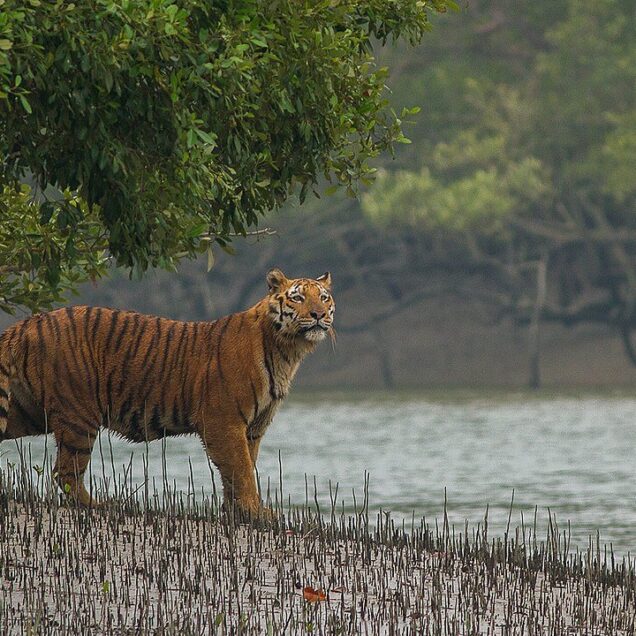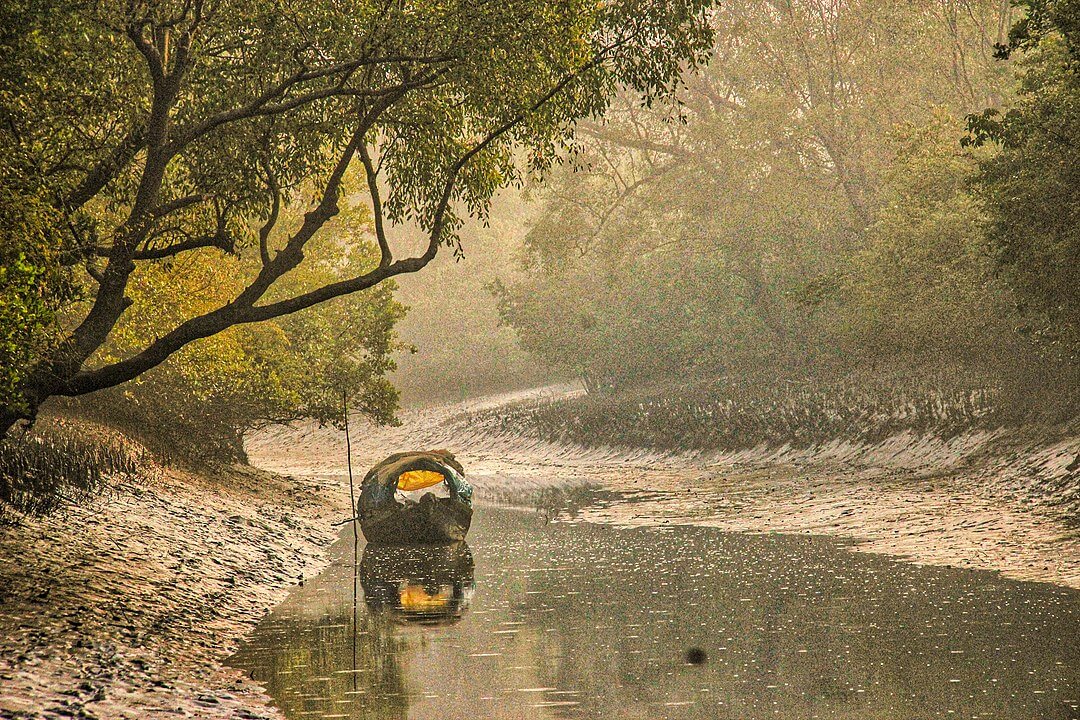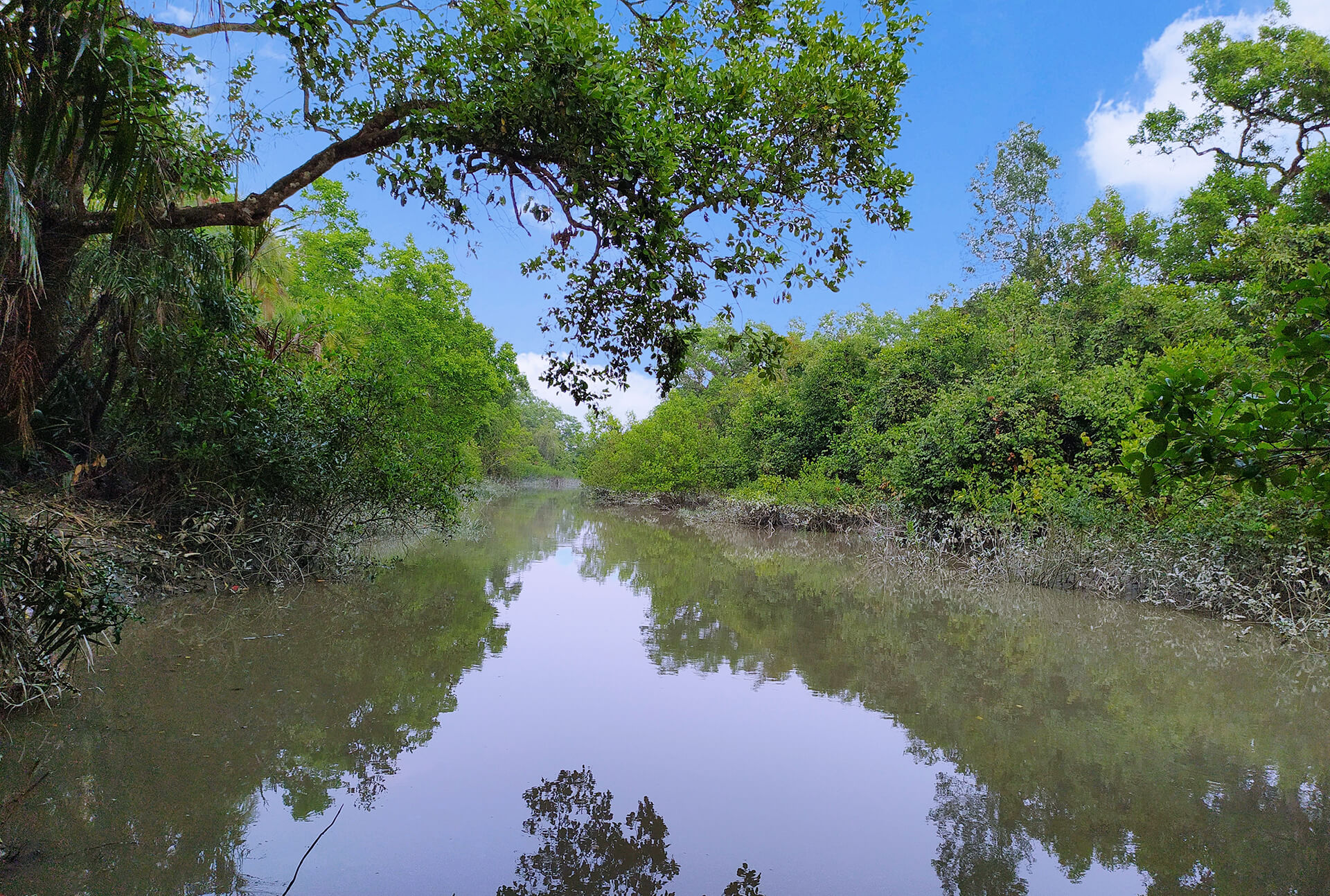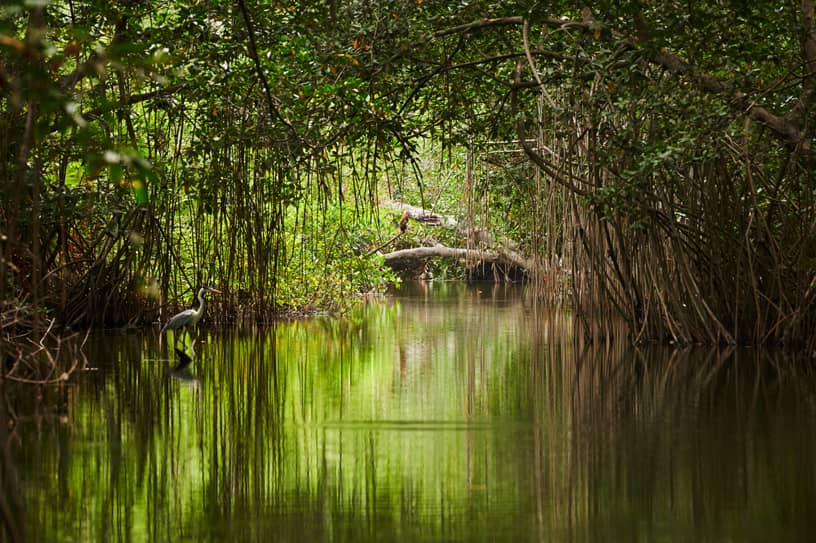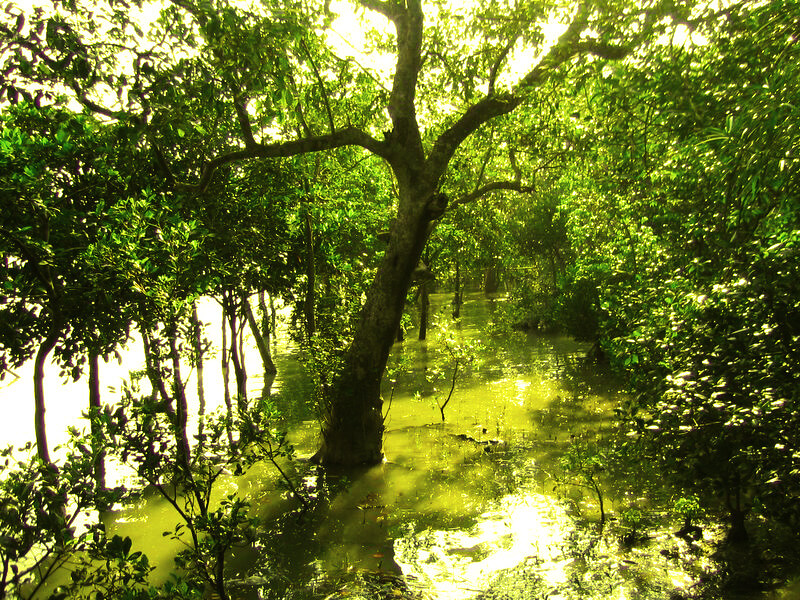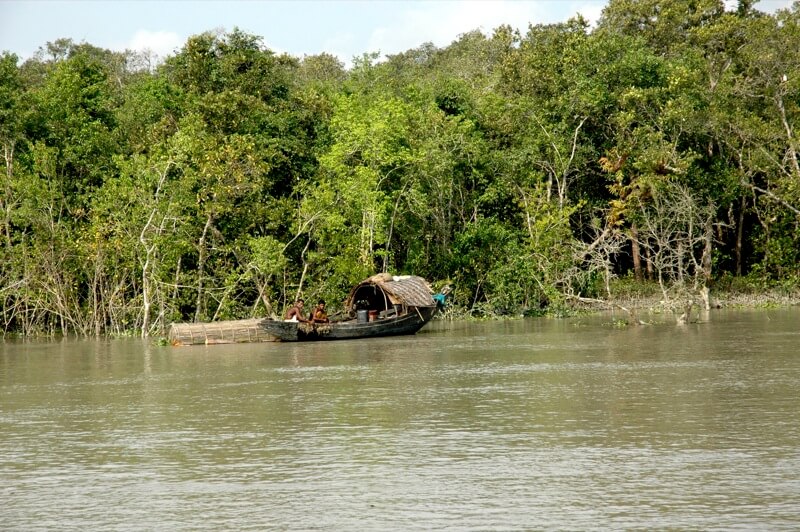

Overview
The Sundarbans, located in the delta of the Ganges, Brahmaputra, and Meghna rivers in India and Bangladesh, is renowned for its mangrove forests and diverse wildlife. This UNESCO World Heritage Site is famous for its population of Bengal tigers, saltwater crocodiles, and rich birdlife. The intricate network of waterways and tidal wetlands makes it a unique and vital ecosystem, offering a distinctive and immersive nature experience.
Sights
Map
Info
The Sundarbans, a UNESCO World Heritage Site, is a unique delta region spanning India and Bangladesh, renowned for its sprawling mangrove forests and rich biodiversity. Key attractions include the Sundarbans National Park, home to the elusive Bengal tiger, saltwater crocodiles, and various bird species. The intricate network of rivers and tidal waterways makes it ideal for boat safaris, providing a close view of the dense mangroves and wildlife.
Local tribes, such as the Mundas and Kharias, live in harmony with this challenging environment, relying on traditional practices for sustenance. Their cultural heritage is deeply intertwined with the forest, reflecting in their customs and festivals. The local cuisine includes rice and fish, with dishes often flavored with indigenous herbs and spices.
The region’s cuisine is simple yet flavorful, featuring dishes like Hilsa Fish Curry and Prawn Malai Curry, showcasing local ingredients and traditional cooking methods. The Sundarbans offers a captivating experience for nature enthusiasts and cultural explorers alike.

